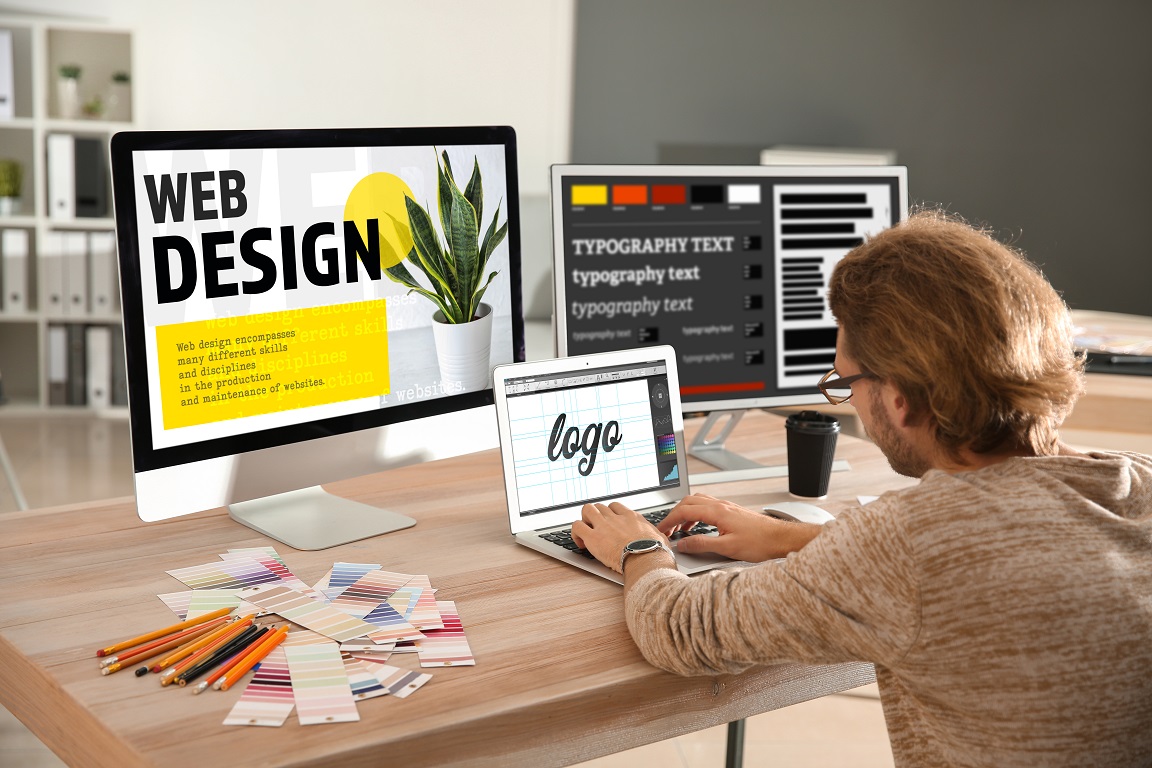Professional Aligned Position Web Design: Custom Websites Tailored to Your Business Needs
Professional Aligned Position Web Design: Custom Websites Tailored to Your Business Needs
Blog Article
The Most Effective Sorts Of Website Design to Boost Individual Experience and Involvement
In the ever-evolving landscape of digital interaction, the efficiency of Web style considerably affects individual experience and interaction. Different style strategies, such as minimalist, responsive, and interactive designs, each offer distinct advantages that can cater to varied customer demands.
Minimal Web Style
As electronic landscapes become significantly messy, minimal website design has emerged as a powerful technique to boosting individual experience. This style viewpoint prioritizes simplicity, concentrating on crucial components while removing unnecessary interruptions. By making use of enough white room, simple navigation, and a limited shade scheme, minimalist design cultivates quality and guides user attention to vital web content.
The core principle of minimalist Web style is to create a smooth interaction for users. By lowering cognitive tons, users can quickly comprehend information without really feeling overwhelmed. This straight technique not just enhances usability yet likewise urges interaction, as site visitors are more likely to discover a site that is very easy and visually attractive to browse.
In addition, minimal design typically emphasizes typography and images, making use of these elements purposefully to convey messages properly. In essence, minimal Web design is not simply a trend; it is a thoughtful method that identifies the relevance of user-centered layout.
Receptive Web Style
In today's diverse electronic setting, responsive website design has actually come to be vital for producing a smooth user experience across a plethora of tools. As individuals access websites on mobile phones, desktops, tablets, and laptops, the ability of a site to adjust its layout and material to different display sizes and resolutions is crucial.
Responsive Web layout utilizes adaptable grids, images, and CSS media queries to guarantee that Web material exists optimally, despite the tool utilized. This approach not only enhances the visual charm of a web site but additionally substantially enhances usability. Individuals are more probable to engage with a website that offers a regular experience, as it gets rid of the aggravation of needing to focus or scroll excessively.
Moreover, search engines, consisting of Google, focus on mobile-friendly websites in search positions. By adopting receptive layout, services can enhance their exposure and get to a more comprehensive target market. This strategy likewise streamlines internet site maintenance, as a single variation of the website can satisfy all gadgets, lowering the need for several variations. In recap, receptive Web style is a fundamental technique that enhances customer experience, engagement, and total satisfaction.
Interactive Web Layout
Receptive website design prepares for improving customer experience, however interactive Web layout takes this a step further by engaging users in a much more vibrant method - Aligned Position Web Design. By including components such as computer animations, clickable prototypes, and real-time comments, interactive Web style astounds users, drawing them right into a richer surfing experience
This strategy not just promotes engagement yet additionally encourages individuals to explore material proactively instead than passively consuming it. Techniques such as gamification, where individuals gain benefits for completing tasks, can significantly boost the moment spent on a site and boost total contentment. Interactive features can simplify complex info, making it a lot more pleasurable and digestible.

Incorporating interactive style aspects can also cause greater conversion prices, as customers are most likely to involve with a site that proactively entails them. Aligned Position Web Design. Eventually, interactive Web layout transforms user experiences right into memorable trips, guaranteeing that site visitors return time after time
Apartment Design
Defined by its minimalistic method, flat layout highlights simpleness and performance, removing away unnecessary elements and concentrating on necessary attributes. This style philosophy focuses on usability, ensuring that customers can browse user interfaces easily and performance. By employing a tidy aesthetic, level design eliminates the clutter typically discovered in more ornate styles, consequently boosting customer emphasis on material and functionality.
The characteristic of flat design exists in its use vibrant shades, basic typography, and geometric forms. These aspects add to an aesthetically appealing user interface that is both modern-day and friendly. Furthermore, level design promotes a sense of quality, enabling customers to determine crucial activities and details without interruption.
Moreover, level design is specifically efficient in responsive Web design, as its simpleness translates well throughout various devices and display dimensions. The absence of intricate appearances and slopes minimizes loading times, which is vital for preserving user interaction. As digital landscapes remain to develop, go to these guys level style stays a relevant option for producing user-friendly web sites that improve total experience. By concentrating on crucial features, flat layout not only meets customer needs yet also motivates seamless communication, making it an essential component of reliable website design methods.
Flexible Web Style
Flexible Web style tailors the user experience by creating multiple fixed layouts tailored to various screen dimensions and gadgets. Unlike receptive design, which fluidly adjusts a solitary layout, flexible design uses distinct designs for specific breakpoints, making certain ideal discussion on numerous platforms. This approach permits developers to concentrate on the unique qualities of each gadget, improving use by supplying exactly what customers need based on their context.
One of the key advantages of adaptive Web design is its capacity to enhance load times and performance. By serving customized web content and images that fit the customer's device, web sites can decrease data usage and boost loading rates. This is particularly helpful for customers with slower connections or limited information plans.
Furthermore, flexible style facilitates an extra regular and controlled branding experience. Since designers produce multiple layouts, they can make certain that the visual components line up with the brand's identity across various platforms - Aligned Position Web Design. This leads to a natural user experience, enhancing involvement and promoting user retention
Conclusion
To conclude, the assimilation of minimalist, receptive, and interactive website design principles significantly boosts individual experience and engagement. Minimal layout fosters clarity and focus, while receptive design ensures flexibility across numerous tools, advertising accessibility. Interactive layout captivates customers via vibrant elements, motivating expedition and personalization. Jointly, Continued these design approaches add to the development of easy to use atmospheres that not just enhance satisfaction yet additionally drive higher conversion prices, highlighting their vital value in modern website design strategies.

Minimalist style fosters clearness and focus, while receptive style makes sure adaptability throughout numerous tools, advertising accessibility. Collectively, these style approaches contribute to the development of easy to use atmospheres that not just boost fulfillment however additionally drive greater conversion prices, emphasizing their vital value in modern Web style approaches.
Report this page